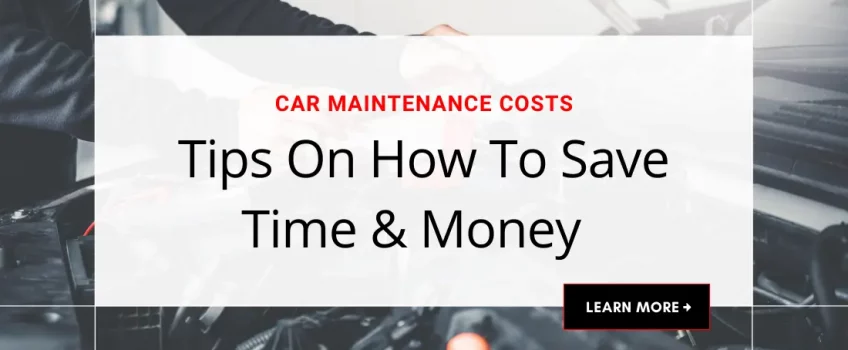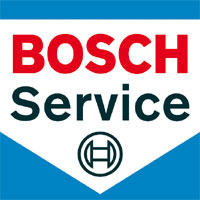
Expert Tips On Reducing Car Maintenance Costs
Owning a car can be expensive since there are several car maintenance costs to consider. From MOTs and regular servicing to new tyres, brakes and routine repairs, your car will eat into your budget and that doesn’t even include the initial purchase price. Fortunately, there are a few simple ways to keep car maintenance costs to a minimum while ensuring your vehicle remains in excellent condition.
How Regular Servicing Keeps Car Maintenance Costs Down
Saving on car maintenance costs doesn’t mean taking shortcuts and doing DIY repairs. An annual vehicle service sets the ideal platform for technicians to identify any potential issues early on. If you ignore minor problems, they could deteriorate and become more expensive to fix. For example, not replacing worn brake pads when you should, can result in damaged discs which are far more expensive.
In addition to a service keeping your vehicle healthy, it also plays a major part in helping to maintain its value when you want to sell. When it comes to regular servicing and car maintenance costs, prevention is certainly better than cure. If you skip a vehicle service or ignore minor faults, your car is more susceptible to bigger and more expensive issues.
How Often Should I Service My Car?
Car service intervals depend on the type of car and the service schedule from the manufacturer. When buying a new car, there are fixed-schedule servicing and variable servicing (long-life service plan).
Fixed-schedule servicing means servicing your car when it reaches a set mileage or time limit, whichever comes first. The most common interval is 12,000 miles or 12 months, but it can also be 6,000 miles or 6 months depending on how you drive. Make sure to check your car service book to confirm.
Variable servicing depends on sensors fitted around the car and the onboard computer that notifies you when a part or component requires attention. Depending on your driving habits, this service interval can exceed 12,000 miles and is especially suitable for drivers who often undertake longer journeys.
Which Is Better, Interim or Full Service?
If you drive less than 12,000 miles on average every year, you will most likely only require one full service per year. This typically involves the following:
- changing the oil and oil filter
- topping up fluids
- changing the air filter
- checking the car’s main components
- Inspect the engine, brakes, steering, clutch, drive belts, tyres, heating and cooling systems
If you have an older car or you drive more than 12,000 miles per year, the additional wear and tear may require an interim service between full services. This includes checking oil and other fluid levels and replacing any parts or components that may be wearing faster than usual. While an interim is relatively thorough, it doesn’t involve as many checks as a full service.
Check Your Vehicle Owner’s Handbook
Following the predetermined car service intervals as stipulated in your owner’s manual should help your vehicle run more efficiently. It can also reduce the likelihood of any serious mechanical failures which automatically helps to keep car maintenance costs in check. Whilst a full car service may cost a fair bit, you can’t put a price on safety. If your vehicle is still under warranty, make sure to adhere to the manufacturer’s servicing schedule since you risk voiding the warranty if you don’t.
Car Maintenance Costs and Cheaper Replacement Parts
While you could find cheaper replacement parts for your car on ebay.co.uk or eurocarparts.com, it’s not recommended, especially if you are inexperienced and not sure what to look for. If you are unsure about anything, ask someone you know who has more experience and does it often. More importantly, ask your mechanic if they will take your parts since many will only use parts that they’ve ordered.
Should I Use Cheap Replacement Parts To Save On Car Maintenance Costs?
When searching for ways to save money on car maintenance costs, many drivers are tempted to buy cheaper non-original components. While it’s common practice, it’s important to understand the advantages and disadvantages of doing that.
Advantages Of Cheap Replacement Parts
- Non-original parts are almost always cheaper which puts some extra change in your pocket short-term
- It’s easy to source non-original parts as there is a wider selection of spare part manufacturers
- Some non-original parts are often the same quality as the car’s manufacturer
Disadvantages Of Using Cheap Replacement Parts
- Fitting non-original parts could invalidate your vehicle warranty which can be costly in the long run
- Since not all car parts are made equal, many non-original car parts aren’t of the same standard as original parts. In some cases, they also don’t fit well which could lead to expensive mechanical problems
- Unlike most manufacturers’ parts that come with at least a 12-month warranty, not all non-original car parts do
Fuel Saving Tips To Help Reduce Car Maintenance Costs
It’s inevitable that wear and tear on your car will eventually lead to extra car maintenance costs. However, you can limit the impact and save money by making a few small tweaks to how you drive.
- Avoid shorter journeys with lots of stops and starts as it can increase fuel costs and wear and tear
- Warm up the engine for at least 30 seconds before driving off. This will help reduce wear and tear and lower your long-term car maintenance costs
- Don’t ride the brake and avoid braking too hard
- Change your oil regularly and check all fluid levels
- Ensure that all your tyres are at the correct pressure and tread level
- Take proper care of your car battery
- Don’t ignore warning lights on your dashboard as it could lead to serious and expensive faults
How To Make Tyres Last Longer
Like everything else, the price of tyres has increased and that means extending their lifespan becomes even more important. As mentioned in the previous section, regularly checking your tyre pressure will help reduce wear and tear while increasing fuel efficiency which saves you money in the long term. Consult your owner’s manual or check the label inside the driver’s door for the correct tyre pressure.
While it’s important to buy high-quality tyres, check the tyre pressure and tread level, and don’t forget about wheel alignment. Not only can it reduce wear and tear on the tyres but it also helps improve steering response and general handling. Also, never buy part-worn tyres as they are not safe regardless of what the seller says
All of our Elite Garages are wheel alignment centres with expertly trained staff and the latest equipment. We can also perform four-wheel balancing, alignment and tracking.
Saving On Your MOT
The most you should pay for an MOT for cars with up to 8 passenger seats is £54.85 which is the fixed price by the Department of Transport. While you might find a lower price if you shop around, make sure you only use a reputable, trustworthy and competent MOT testing centre. Another way to save on your MOT is to look for specials where the MOT is discounted if you book a premium service simultaneously. Is your MOT due? Book it online today!
In summary, a well-maintained car will give you better fuel economy, a safer driving experience and a reduced risk of unexpected breakdowns or faults. By performing annual car services and following these basic tips, you can reduce your car maintenance costs by some margin. If you’re unsure about the type of car service you need, contact one of our expert technicians at your nearest Elite Garages branch. You can also book your service online!
About Us
Opening Times
Saturday : 8:30–4:00
Sunday : closed
More Information
Contact UsCustomer Information Pack
Check MOT Due Date
Free MOT reminder
Careers


